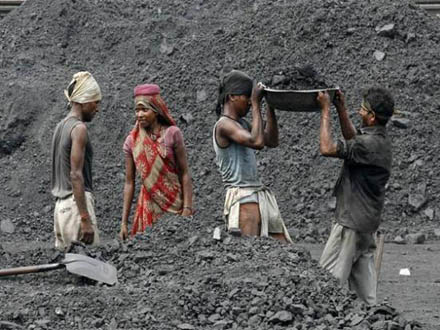
New Delhi, August 18: The CAG reports on allocation of coal blocks, ultra mega power projects and public private partnership in Indira Gandhi international airport have put the UPA government in a tight spot as the revenue loss from these projects amount to a whopping Rs3.78 lakh crore approximately.
Terming it the “biggest ever scam”, the Opposition immediately went for the government’s jugular. For the next few days, one can expect Parliament to witness pandemonium over this as the BJP-led NDA sharpens its claws and prepares to launch a frontal assault on the government.
To make the calculation simpler, let us look at the breakup: For coal allocation, the loss is Rs1.86 lakh crore, for the power projects it is 0.29 lakh crore and for the Indira Gandhi international airport 1.63 lakh crore (as quoted by the Delhi International Airport Limited). The CAG has a conservative figure of Rs24,000 crore.
For the government, this was a huge loss of face because it was prime minister Manmohan Singh who held charge of the coal portfolio when the coal blocks allocations were done. Going by the figures revealed by the CAG (Comptroller and Auditor General), the coal block allocation scam alone is the biggest ever and has caused the government a staggering loss of Rs 1.86 lakh crore. This surpasses the figure of the 2G scam, which hovered around Rs 1.76 lakh crore.
Even as the Opposition demanded Singh’s resignation, the Congress fielded Manish Tiwari to take the brunt of the NDA criticism. Tiwari was scathing in his attack on the CAG reports.
“When the coal blocks have been allotted for captive use and the coal is not for sale, how can the auditor arrive at any figure of the gain that would accrue to the allottees?” he asked.
Stressing that even in the 2G case, the Supreme Court had not endorsed the CAG’s concept of a presumptive loss, Tiwari said the CAG’s calculations have, in fact, no basis.
On the other hand, summarily dismissing the Opposition’s demand for Singh’s resignation, Union coal minister Sriprakash Jaiswal said, “The ministry does not agree with the assessments made by the auditor. There was nothing wrong with the process of finalising the allottees as it was done under the existing process.”
The BJP was unfazed by the Congress logic and its assertions against the CAG. The party made a simple point. It went on insisting that Singh should take moral responsibility and resign. After all, between 2004 and 2009, Singh was for the most part the minister for coal except for brief periods when Jharkhand Mukti Morcha leader Shibu Soren took charge of the portfolio.
BJP leaders Sushma Swaraj and Arun Jaitley came down heavily on the prime minister holding him directly responsible for the loss of Rs1.86 lakh crore to the exchequer. The BJP leaders pointed out that the CAG had shown how the government had not implemented its own decision to allow competitive bidding — a decision which was taken on June 18, 2004.
“He [Singh] has to seriously introspect, impose on himself the moral censure of quitting himself,” Jaitley said.
Swaraj said the party would go on demanding the resignation of the prime minister in Parliament.
In these politically impactful reports, the CAG has slammed the UPA government for delaying the competitive bidding process in the allocation of coal blocks. According to the report tabled in Parliament, 57 coal blocks were allocated to private sector companies that may have resulted in windfall profit for the companies while the government suffered heavy losses.
In another report on ultra mega power projects, the CAG has questioned the government’s decision to allow Reliance Power to use excess coal from the allocated blocks for its other projects.
According to the CAG report, Reliance Power, at the time the contract was awarded, had said the company would be able to use 20 million tonnes from the two blocks and there would be sufficient coal for the Sasan UMPP.
In the same report, the CAG has urged the government to review the award of the Chhatrasaal coal block to Reliance Power for providing level playing field to other power developers. The CAG has pegged the profit of the private power company to Rs29,033 crore.
These three critical reports meant yet another beating for Congress that already has a battered image. Already, the government, suffering from a policy stasis because of a lack of political consensus, has failed to defend itself in the face of huge and unprecedented corruption charges.
Now, the coal block allocation scam threatens to taint the Mr Clean persona of the prime minister. The Congress will require a lot of positive energy to emerge from this crisis with its head held high.






Comments
Add new comment